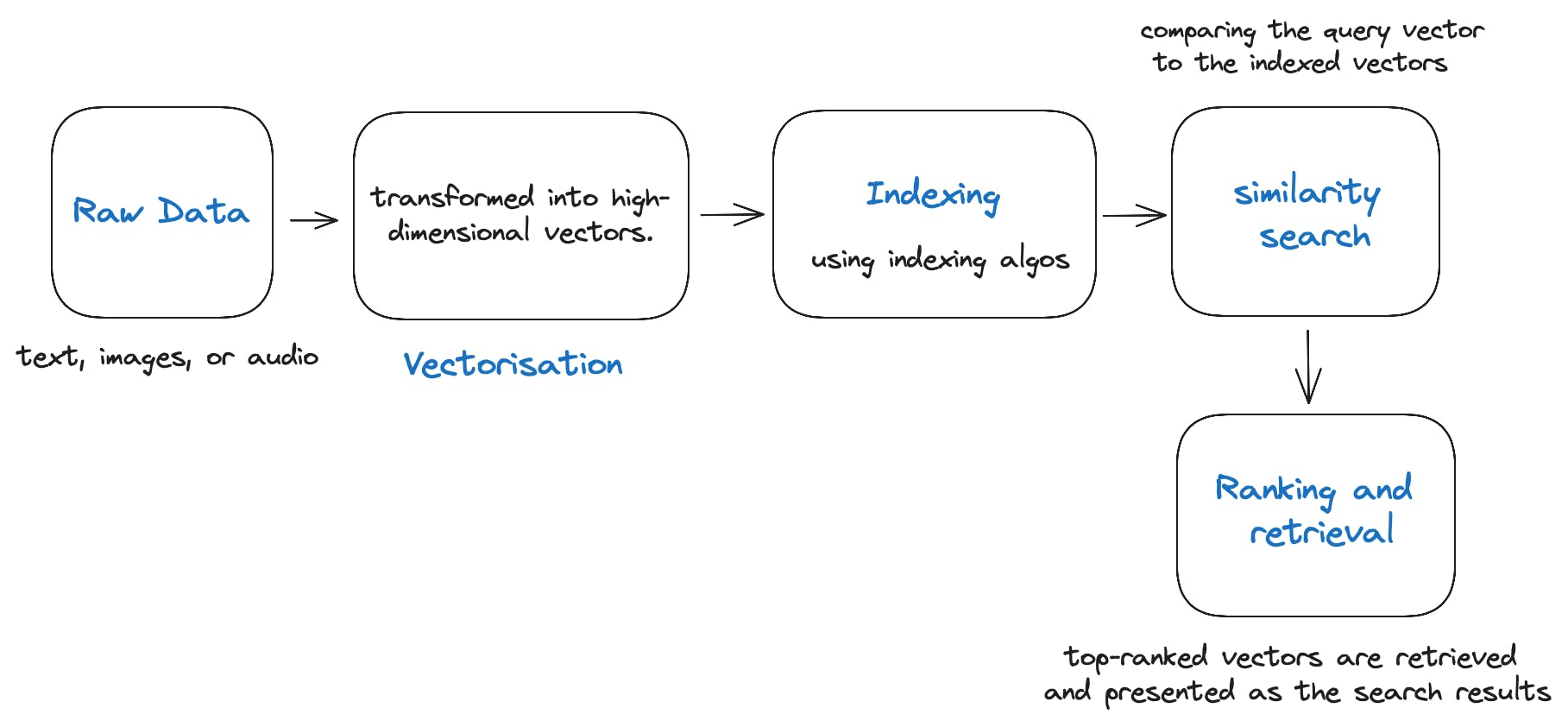Unveiling the Hype: What Are Vector Databases and Why They're the Talk of the Town!
Vector databases provide the backbone for the effective functioning of generative AI and LLMs by facilitating seamless access to and retrieval of similar data representations. By organizing and indexing vectors, vector databases provide the foundation for these advanced AI models to generate more accurate and contextually relevant outputs, making them an essential component in the world of generative AI and LLMs.
What Are Vector Databases? Let's Get Nerdy!
Alright, let's break it down. Vector databases are like the superheroes of data management. They don their capes, equipped with advanced indexing and searching techniques, to tackle the ever-growing challenges of storing and retrieving information. Think of them as the Avengers of the data world, ready to save the day!

The Power of Vector Similarity Search: Finding Your Data Soulmates!
Now, imagine you're on an online shopping spree. You find the perfect pair of shoes, and you want more options just like them. Enter vector databases! These databases excel at finding data points that are similar to your query vector. They're like your shopping soulmates, helping you discover products that match your preferences and enhancing your retail therapy experience.
But wait, there's more! Vector databases can also work wonders in image recognition. They're like the Sherlock Holmes of databases, instantly identifying similar images or objects.
Need to find a photo of that hilarious cat you saw? Boom! The vector database will have it at your fingertips faster than you can say "meow."

Vectorization: Turning Data into Supercharged Vectors!
Now, let's talk about vectorization, the secret sauce that makes vector databases so powerful. It's like giving your data a superhero makeover! Vectorization involves transforming raw data into high-dimensional vectors that capture all the relevant features and relationships. It's like taking your everyday Clark Kent data and turning it into the Superman of vectors!
How Do Vector Databases Work? The Secret Sauce Revealed!
Behind the scenes, vector databases rely on some serious technical wizardry. So, let's put on our data scientist hats and unravel the magic!

Step 1: Vectorization - From Ordinary to Extraordinary!
The journey begins with vectorization, where raw data is transformed into high-dimensional vectors. It's like giving your data a superhero makeover—putting on the spandex and cape to become a mighty vector!
Step 2: Indexing - Organizing the Vector Avengers!
Once the data is transformed into vectors, it's time to assemble the Vector Avengers—the indexing algorithms. These algorithms work tirelessly to organize the vectors in a way that enables efficient searching and retrieval. Think of them as the Hulk of organization, smashing through data chaos to bring order to the database universe!
Step 3: Similarity Search - Finding Your Vector Soulmates!
Now comes the fun part—similarity search! When you make a query, the vector database springs into action, comparing your query vector to the vectors stored in its mighty index. It's like a cosmic game of "Find the Most Similar Vector." The database quickly identifies the closest matches, bringing you one step closer to finding your data soulmates!
Step 4: Ranking and Retrieval - Unleashing the Power of Order!
Once the similar vectors are found, the vector database sorts them in order of relevance. It's like having a ranking system that separates the Avengers from the sidekicks, ensuring that the most pertinent data is presented to you. With a snap of its metaphorical fingers, the database retrieves the top-ranked results, giving you the data you need, when you need it!
Real-World Applications: Where Vector Databases Shine!
Okay, let's see these vector databases in action, shall we?
Recommendation Systems: Picture this: You're binge-watching your favorite show, and suddenly, a recommendation pops up that perfectly matches your taste. Thanks to vector databases, personalized recommendations make streaming services feel like they have psychic powers. It's like they can read your mind (or your vectors)!
Image and Video Analysis: Imagine you're scrolling through an endless feed of images, trying to find that one elusive picture you saw last week. With vector databases, image searches become a breeze. They're like your personal detective, helping you find that lost picture faster than you can say "cheese."
Fraud Detection: Let's face it, fraudsters are the villains of the financial world. But fear not! Vector databases are here to save the day. By analyzing patterns in transactions and comparing vectors, they can spot those sneaky anomalies and detect fraud faster than you can say "gotcha."
Biomedical Research: Vector databases are also heroes in the world of healthcare. They assist researchers in analyzing genomics data, protein structures, and drug discovery. It's like having a team of brilliant scientists by your side, working tirelessly to advance medical breakthroughs.
Future Prospects: A Thrilling Data-Driven Tomorrow!
Hold onto your hats because the future of vector databases is full of excitement! As research progresses, we can expect even more powerful vectorization techniques and lightning-fast indexing algorithms. The adoption of vector databases will skyrocket, leading to mind-blowing advancements in data analytics and artificial intelligence. It's like a superhero team-up that will reshape the future of technology!
Conclusion
Vector databases have ushered in a new era of data management, allowing us to unlock valuable insights from complex datasets efficiently. By harnessing the power of vector similarity search and leveraging advanced vectorization techniques, these databases have revolutionized the way we store, retrieve, and analyze data. As we continue to explore the vast potential of vector databases, we can anticipate groundbreaking advancements that will shape the future of data-driven decision-making across industries. So, go forth, unleash the power of vectors, and embrace the extraordinary potential of data!
